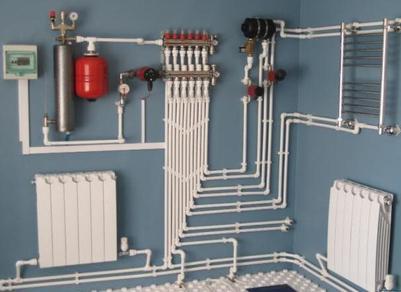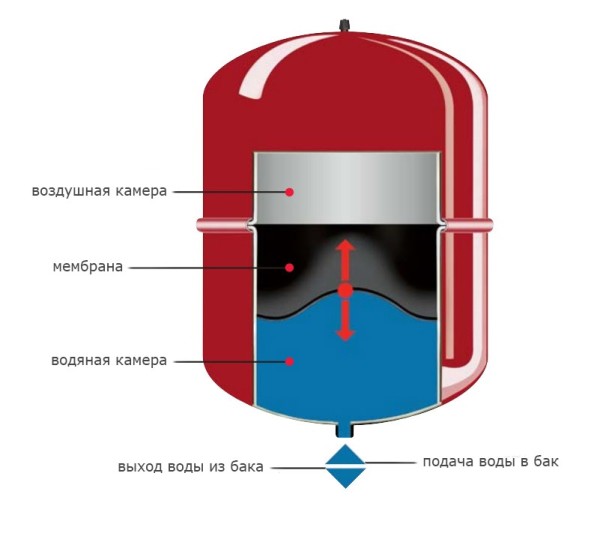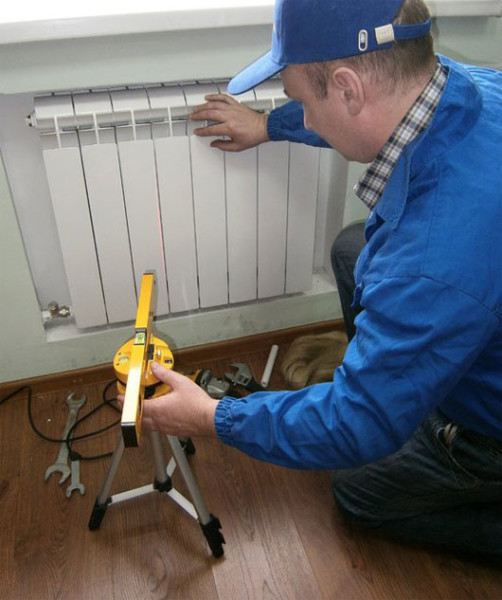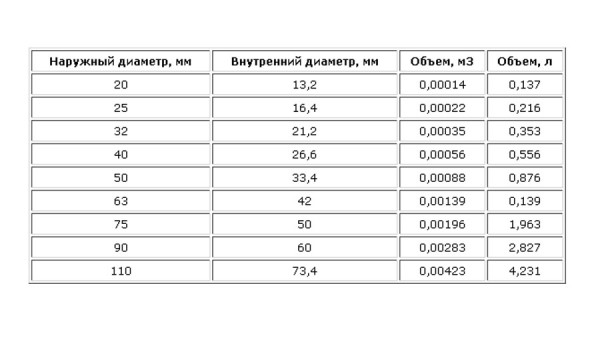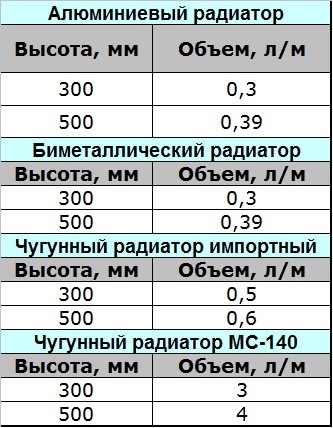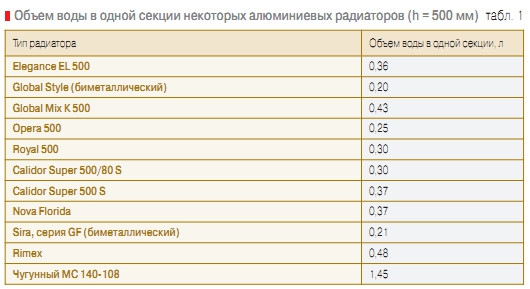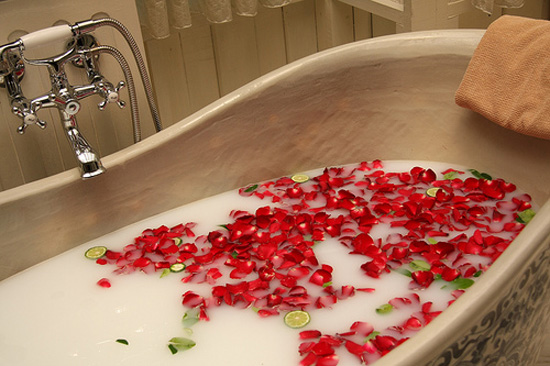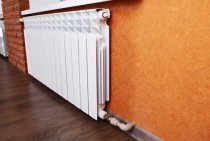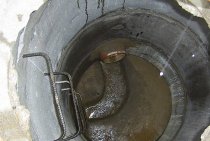Types of radiators
The most popular among the total number of convectors are three types:
- Aluminum radiator;
- Cast iron battery;
- Bimetal radiator.
If you know which convector is installed in your home and are able to count the number of sections, then it will not be difficult to make simple calculations. Next, calculate volume of water in the radiator. table and all the necessary data are presented below. They will help to accurately calculate the amount of coolant in the entire system.
Aluminum
Although in some cases the internal heating system of each battery may differ, there are generally accepted parameters that allow you to determine the amount of liquid that fits into it. With a possible error of 5%, you will know that one section of an aluminum radiator can contain up to 450 ml of water
It is worth paying attention to the fact that for other coolants the volumes can be increased
Calculating the amount of liquid that fits in a cast-iron radiator is a little more difficult. An important factor will be the novelty of the convector. In new imported radiators, there are much fewer voids, and due to the improved structure, they heat no worse than the old ones.
The new cast iron convector holds about 1 liter of liquid, the old one will fit 700 ml more.
Bimetallic
These types of radiators are quite economical and productive. The reason why filling volumes can change lies only in the features of a particular model and pressure spread. On average, such a convector is filled with 250 ml of water.
Possible changes
Each battery manufacturer sets its own minimum / maximum allowable standards, but the volume of coolant in the inner tubes of each model may change based on pressure increases. Usually, in private houses and new buildings, an expansion tank is installed on the basement floor, which allows you to stabilize the pressure of the liquid even when it expands when heated.
The parameters are also changing on outdated radiators. Often, even on non-ferrous metal tubes, growths form due to internal corrosion. The problem can be impurities in the water.
Due to such growths in the tubes, the amount of water in the system must be gradually reduced. Considering all the features of your convector and the general data from the table, you can easily calculate the required amount of water for the heating radiator and the entire system.
Expansion tank in the heating system and the principle of its operation Electric convectors for heating a private house Pressure in the expansion tank for closed-type heating How to choose pellet boilers for heating a private house
LED energy-saving lamps are widely used in housing and communal services. They are different from the old …Read More »
The Provence-style interior requires that the whole environment comply with its canons. …More »
Hydroisol HPP is an insulating material that is made on the basis of fiberglass canvas. This …More »
Why you need to know the amount of water in the battery
Usually, attention is paid to radiators with the beginning or end of the heating season or during general cleaning. Meanwhile, vital processes for a person take place inside him, for which the coolant is responsible - most often water.
Does information about how much of this liquid fit in one battery section have any value?
The volume of water inside this "web" can be easily found
It turns out that there is more than one reason for this:
- do not "weight" the heater. because the volume of water in a cast-iron heating radiator increases its already considerable weight;
- installation of a heating system with a certain boiler power requires the calculation of the total amount of coolant. including in radiators;
- knowing that the amount of coolant in the battery is 10–12% of the heating system - all batteries, pipes and the boiler, you can “dry” drain the water;
- when choosing an expansion tank;
The volume of the expansion tank must correspond to the amount of coolant in the system
- not to overdo it with concentrated antifreeze. which is poured in a certain proportion with water;
- for natural / forced circulation type, the optimal battery size is selected - large in the first case and no difference in the second.
Forced Initiative
In a panel house with central heating, you don’t have to worry about such issues as filling the system with coolant, this is the diocese of housing and communal services. But taking care of the estate or cottage is a huge responsibility that lies entirely on your shoulders. The opportunity to save time and money forces the owners to maintain thermal communications with their own hands, sometimes using non-standard methods.
In the photo - checking the battery
For example, the lack of a centralized water supply forces the use of natural sources - wells, wells, ponds.
Working with documentation
The answer to the question, how much water flows out of pipe "A", or rather, should go there, usually lies in the technical data sheet of the radiator and boiler. With pipes it is a little more difficult, but not deadly - knowing their inner diameter, on our website you can find a detailed table on the amount of water in liters / cubic meters per linear meter. The same can be said about the data on the volume of the fuel boiler or batteries.
Data on the internal volume of pipes
Knowing the filling capacity of each meter of the pipe, it is elementary to find out the total “pipe” volume of the coolant - multiply the tabular figure by the number of meters. To do this, it is not necessary to crawl around the house with a tape measure, but use a project plan and a ruler.
Note! On the Internet, a table of the volume of water in a heating radiator looks even more convenient. It can compare the capacity of radiators from different materials, which will give you the opportunity to choose the appropriate option.
The volume of water does not depend on the type of radiator
From the presented table it can be seen that the volume of water in the section of the bimetallic radiator and the aluminum one is the same. So the material does not matter, the main dimensions of the heater.
Non-permanent residence in the house obliges the owners to use antifreeze. Since this pleasure is not cheap (the price for 10 liters of domestic propylene glycol "Technology of Comfort" reaches a thousand rubles), you need to know exactly the amount of anti-freeze. Having determined the extreme minus threshold for the heating system, the substances are mixed in a certain proportion.
Note! Do not add antifreeze to a heating system made of galvanized pipes
Antifreeze lowers the freezing point of a liquid
Average cheat sheet
The average data that determines the volume of water in steel panel-type heating radiators are as follows:
- models Demrad, Thermogross 11 type for every 10 cm of length there is 0.25 l of coolant;
- in similar models of type 22, this figure increases to 0.5 liters for the same length.
Each section of the good old "cast iron" of different models has the following capacity:
- MS 140 - 1.11-1.45 liters (from 5.7 to 7.1 kg);
- ChM 1 - 0.66–0.9 l s;
- World Cup 2 - 0.7–0.95 l;
- World Cup 3 - 0.155–0.246 l;
- Konner Modern - 0.12–0.15 l (3.5 kg).
Note! You can see how the traditional MC 140 differs from the Chinese Konner in weight, which you should pay attention to if you have floor models
But so much is included in the aluminum section
If your battery is a tricky author's thing, it is difficult to find out its volume, but it is possible. For example, the volume of water in a tubular steel radiator is calculated ingeniously simply - one hole is closed with a plug, and water is poured through the second to the top.
Note! Mark the amount of liquid poured immediately or later, when you pour the contents into a bucket / bath.This calculation method is applicable to a radiator of any complexity without documents
In the heat exchangers of a wall-mounted heating boiler, on average, from 3 to 6 liters are placed, and in the floor and parapet versions - from 10 to 30 liters of water. So, having learned the amount of coolant in all the corners that it reaches, you can carry out a responsible operation - calculate the volume of the expansion tank. It is on him that the optimal pressure in the system and the required volume of coolant depend.
The principle of operation of the expansion tank
The calculation instruction involves the use of a simple formula:
- Vc is the volume of coolant in the heating system (what was mentioned above - radiators + pipes + boiler heat exchangers);
- K is the expansion coefficient of the coolant (for water it is 4%, so 1.04 is used in the formula);
- D is the tank expansion efficiency;
- Vb is the capacity of the expansion tank.
You can find out the volume of coolant in radiators or pipes close to the real figure based on the power of the boiler using the formula:
x kW * 15=VS, where
- kW - boiler power;
- number 15 - the number of liters of water to obtain 1 kW of energy;
- VS is the total capacity of the system.
Average water consumption
In the housing sector, it is generally accepted that one person consumes up to 300 liters of water per day. Where does such a figure come from?
Approximately 40 liters manage to “escape” during washing, half as much - 20 liters are used for kitchen needs and cooking, 30 liters for washing, 70 for a shower, 140 for taking a bath, 15 liters for faulty plumbing. Since washing and a bath do not happen every day, according to the standards of the Soviet era, 305 liters came out, and this figure has not been checked or studied by anyone for a long time. At the same time, the average family of 3-4 people consumes about 20 m³, which is about 170 liters per person per day.
There are exceptions to the rule: you can take a bath in different ways. Europeans do not drain the water from the tank and bathe in it in turn. Spoiled Russians have a completely different attitude to hygiene. A standard bath “eats up” up to 150 liters, after which they usually take a shower (+50 liters). Spa treatments in the bathroom will cost 180 liters (another 120 liters of pre-wash and 50 liters for rinsing).
In a word, the calculations are depressing.
How many liters does it take to take a bath
We talked about regular bathing. A person just lies down for a few minutes, relaxes. Then he washed off everything superfluous, rinsed in the shower and that's it. In this case, the volume of water will be within 200 liters.
How about taking a relaxing bath? With abundant foam, with various salts, oils and flavors? The beneficial effects are believed to be:
- bath with soda protects the skin from dryness;
- with table salt - has a general strengthening effect on the body;
- with sea salt - helps to reduce fatigue and pain in the joints, improve the overall condition of the skin;
- with pine needle extract - eliminates allergic redness and has a calming effect on the nervous system;
- with sedge - for those who have urolithiasis problems;
- with honey helps to relax and improve sleep;
- with a mixture of powdered milk - makes the skin supple;
- with a glass of fruit vinegar - relieves skin flaking.
Here, one cannot do without the phased adoption of water procedures.
- 150 - 200 liters for relaxation;
- 100 - 200 liters to wash off the dirt;
- 40 - 50 final rinse under the shower.
Thus, the flow rate of the liquid increases significantly.
Application of steel radiators
Steel batteries are widely used in private homes in individual heating systems, in various institutions, offices, these highly efficient devices are often used in energy-saving heating systems.
Steel radiators are very popular in many countries of the world.
In Europe, traditional heating appliances are steel panel radiators.
They were developed during the energy crisis, so they meet all the requirements for energy saving.This type of radiator now occupies 80% of the European market for heating appliances.
Low-response panel radiators have high thermal performance, so they are ideal for a high-quality, balanced and easily controlled heating system.
In Europe, the demand for steel heating batteries is due to the reconstruction of technologically obsolete heating systems and their transition to more efficient closed circuits, with heat exchangers and membrane expansion tanks.
In Russia, steel panel heating radiators are installed in new country houses, dachas, luxury new cottages and new commercial buildings. On the Russian market of steel heating batteries, both domestic and foreign manufacturers offer their products. The most common and proven brands of steel radiators on the Russian market include Purmo, Kermi, Korado. Recently, Turkish firms have begun to develop the domestic market, which offer cheaper products.
Conclusion
It is quite easy to find out the volume of a standard bathroom. For some people, the figures for water consumption for the necessary procedures may be shocking. But if you are serious about starting to save money, be sure to read the passport of the model you like before purchasing a hot tub. This is especially true for devices with an asymmetric shape, the volume of which is very problematic to determine independently.
The document must indicate all the parameters of the font and its volume. As a result of familiarization with this data, it will be much easier for you to control the flow of water, which means that the utility bill will not be an unpleasant surprise for you.
